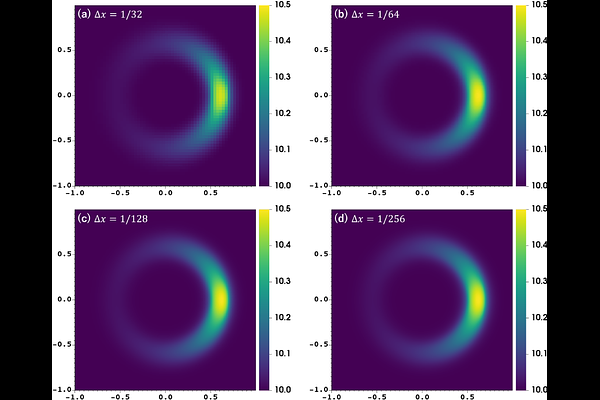Formation and Early Evolution of Protoplanetary Disks under Nonuniform Cosmic-Ray Ionization

Formation and Early Evolution of Protoplanetary Disks under Nonuniform Cosmic-Ray Ionization
Erika Nishio, Kengo Tomida, Yuki Kudoh, Shigeo S. Kimura
AbstractAngular momentum transport by magnetic fields is important for formation and evolution of protoplanetary disks. The effects of magnetic fields are suppressed due to non-ideal magnetohydrodynamic (MHD) effects such as ambipolar diffusion and Ohmic dissipation, which depend on the degree of ionization. Cosmic rays (CRs) are the primary source of ionization in star-forming clouds, and their distribution is nonuniform as it is affected by gas density and magnetic fields. Therefore, CRs, magnetic fields, and gas interact with each other. In this work, we develop a new fully implicit cosmic ray transport module in Athena++ and perform three-dimensional simulations of disk formation from collapse of molecular cloud cores. Since CRs are strongly attenuated in the dense gas at the disk scale, distribution of magnetic fields is considerably altered compared to conventional models assuming a uniform ionization rate. While the total magnetic fluxes accreted onto the disks remain similar as the gas outside the disks remain sufficiently ionized and well coupled, the magnetic fields in the disks are less twisted due to the stronger non-ideal MHD effects. As a consequence, magnetic angular momentum transport is strongly suppressed at the disk scale, resulting in more gravitationally unstable disks with more prominent spiral arms. Our simulations demonstrate influence of non-uniform ionization resulting from CR transport and attenuation on the disk formation and evolution.